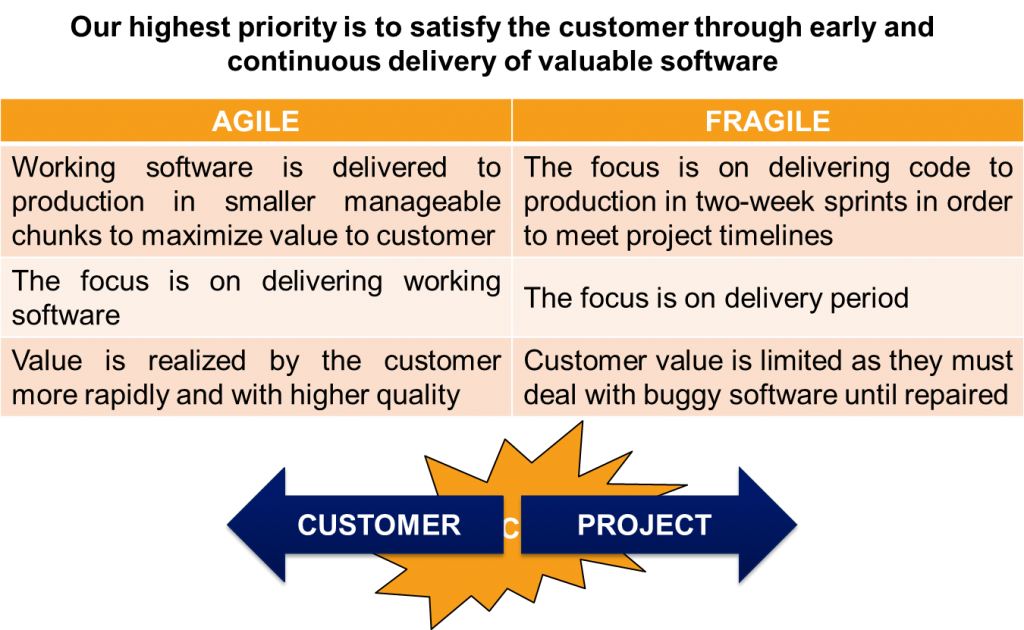Agile vs Fragile: Add Value to The Customer
Posted on Jan, 2013 by Admin
This is part 3 in a series of 17. To start at the beginning, first read Agile vs Fragile: A Disciplined Approach or an Excuse for Chaos.
As I have studied and applied Agile practices within my testing teams, I have often referred to the twelve (12) Agile principles. When you read these principles it is very difficult to find even the slightest bit of issue with them. In fact, if the majority of teams (whether Agile or not) embraced these principles wholeheartedly, then a majority of projects would be successful. The problem isn’t the principles. The problem is the superficial way in which most teams implement to principles.
Let’s take a look at each of the 12 principles and identify the characteristics that a true Agile team would demonstrate, and the characteristics that a more Fragile team would demonstrate.
Principle 1: Add Value to The Customer
The first principle of Agile is to add value to the customer. The Agile principle puts it in terms of satisfaction; however, a better way to represent it is in the value that is added to the customer. If you add value, the customer will be satisfied. If you don’t add value, or even worse degrade value, then the customer won’t be satisfied.
The key here is that in an Agile world, the focus is on the customer and adding value to that customer. Unfortunately, in a Fragile world, the focus is on the project. This perversion of the focus is more worried about making timelines and getting anything into production that imposes defective software onto the customer. The customer is promised fixes in future releases. This is absolutely in conflict with the basic premise of the “valuable software” principle. Defective software isn’t valuable. While it may be functional, if it doesn’t perform to the customer’s expectations then the customer is forced to accept reduced value.
In the next installment of the blog we will talk about the 2nd Agile principle. In the meantime…Keep on testing!

